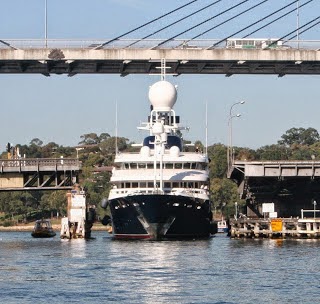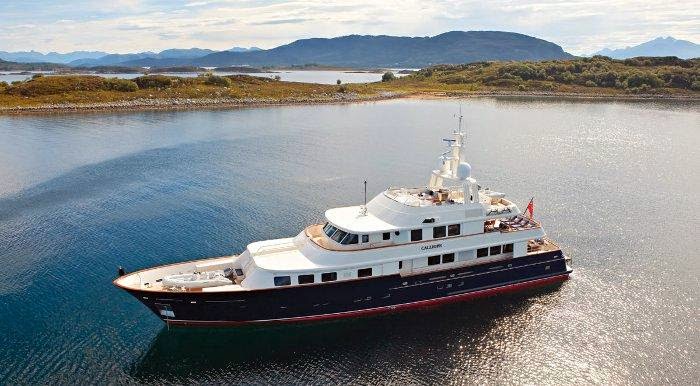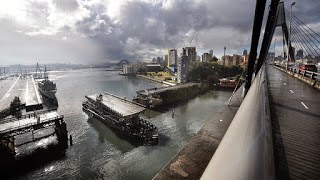Following a fatal accident on board a superyacht in SydneyHarbour last year the Australian Transport Safety Bureau (ATSB) has published a report.
It suggests that crew serving aboard the motor yacht Calliopewere not given adequate guidance under the vessel’s Safety Management System and that this lack of guidance lays at the heart of the tragedy.
While attempting to navigate through the narrow openings of Glebe Island Bridge on February 8 last year, a crewman was crushed to death.
 The report has found that the 42 metre Cayman Islands flagged superyacht was off course and veering towards the bridge when the assistant engineer leaned over the side of the yacht to position a fender.
The report has found that the 42 metre Cayman Islands flagged superyacht was off course and veering towards the bridge when the assistant engineer leaned over the side of the yacht to position a fender.The report says he was distracted by what he was doing and was crushed between the fender and the yacht. He died from his injuries.
Other findings of the ATSB report include:
- Calliope’s safety management system “did not provide the crew with adequate guidance or contain specific requirements regarding passage planning, training and familiarisation”.
- “A passage plan was not completed for the voyage from Rozelle Bay out through the Glebe Island Bridge to the yacht’s intended destination of Broken Bay, north of Sydney.
- The yacht’s master had not taken into account daylight savings time when calculating the tidal conditions for the intended transit through the bridge. This resulted in an erroneous belief that the tide was just beginning to flood when it was actually just finishing the ebb.”
- “In accordance with his usual practice for day trips, the master considered a passage plan unnecessary for the voyage on 8 February due to the perceived simplicity of the voyage.”
- “However, the completion of a passage plan would have probably ensured that the risks associated with transiting the Glebe Island Bridge, Sydney Harbour and the ocean passage to Broken Bay were appropriately considered and effectively treated.”
- The risks associated with the voyage were not identified or assessed, contingencies were not considered and the crew were not appropriately briefed.”
- “The risks posed to the port were the same as those posed by a similarly sized commercially operated vessels”.
Acting as yacht managers the American based Marine Construction Management, said in response to the report “The yachts Captain is now required to submit passage plans to us for every voyage, regardless of its duration.
They added: “A written procedure for transiting bridge openings would also be written and implemented as part of the on going development of the SMS.
“The company has also subsequently engaged the services of a specialist consultant to conduct on board audits of the implementation and continuing use and development of the SMS.”


